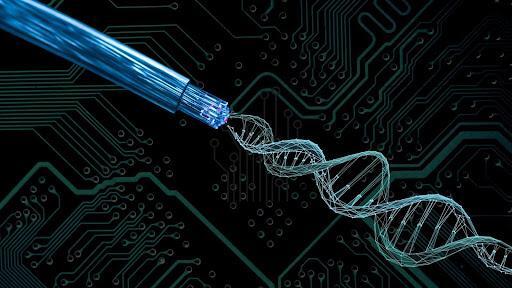
DNA’s Electron Flow May Unlock Future Biocompatible Electronics
The human body is home to trillions of cells, each containing a molecule of deoxyribonucleic acid, or DNA. This remarkable molecule is responsible for carrying genetic information, passing traits from one generation to the next. But did you know that DNA also has the potential to revolutionize the field of electronics? Recent research has shed light on DNA’s electrical properties, revealing a novel pathway for electron transport that could pave the way for smaller, more efficient, and biocompatible devices.
In a breakthrough study, researchers explored the interactions between electrons and molecular vibrations, or phonons, in DNA strands. This phenomenon, known as electron-vibration dynamics, is unique to DNA and has significant implications for the development of biocompatible electronics. The study, published in Nature Communications, has sparked excitement among scientists and engineers, who see the potential for DNA to become a building block for future electronic devices.
So, how does DNA’s electron flow work? In traditional electronic devices, electrons flow through wires, carrying information and energy. However, DNA’s structure is vastly different from that of conventional materials. DNA is a long, double-stranded molecule consisting of nucleotides, which are arranged in a specific sequence. Each nucleotide is composed of a sugar molecule, a phosphate group, and one of four nitrogenous bases (adenine, guanine, cytosine, and thymine).
Researchers found that when an electric current is applied to DNA, the electrons interact with the molecular vibrations, or phonons, within the molecule. This interaction creates a novel pathway for electron transport, allowing electrons to flow through the DNA strand. The study revealed that this electron-vibration dynamics is responsible for the unique electrical properties of DNA, making it an attractive material for biocompatible electronics.
The implications of this discovery are significant. Traditional electronic devices often rely on toxic materials, such as lead, mercury, and cadmium, which can harm human health and the environment. DNA-based electronics, on the other hand, could be designed to be biodegradable, non-toxic, and biocompatible. This could lead to the development of implantable devices, such as pacemakers and neural implants, that are safer and more effective.
Moreover, DNA’s electron flow could enable the creation of ultra-small devices, such as nanoscale sensors and transistors. These devices would be capable of operating at the molecular level, allowing for the detection of specific molecules and the manipulation of molecular interactions. This could lead to breakthroughs in fields such as medicine, biology, and chemistry.
The study’s findings also open up new avenues for research in the field of nanotechnology. DNA’s unique electron-vibration dynamics could be used to create novel nanoscale devices, such as DNA-based transistors and logic gates. These devices would be capable of processing information at the molecular level, enabling the development of ultra-compact and highly efficient electronic systems.
The potential applications of DNA-based electronics are vast and varied. In the field of medicine, DNA-based devices could be used for diagnostic purposes, such as detecting genetic diseases or monitoring the progression of cancer. In the field of environmental monitoring, DNA-based sensors could be used to detect pollutants and toxins in water and air.
In conclusion, the discovery of DNA’s electron flow has significant implications for the development of biocompatible electronics. The unique electron-vibration dynamics of DNA offers a novel pathway for electron transport, paving the way for the creation of smaller, more efficient, and biocompatible devices. As researchers continue to explore the electrical properties of DNA, we can expect to see the development of innovative technologies that could revolutionize the way we live and work.
Source:






